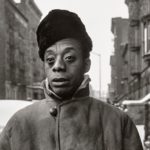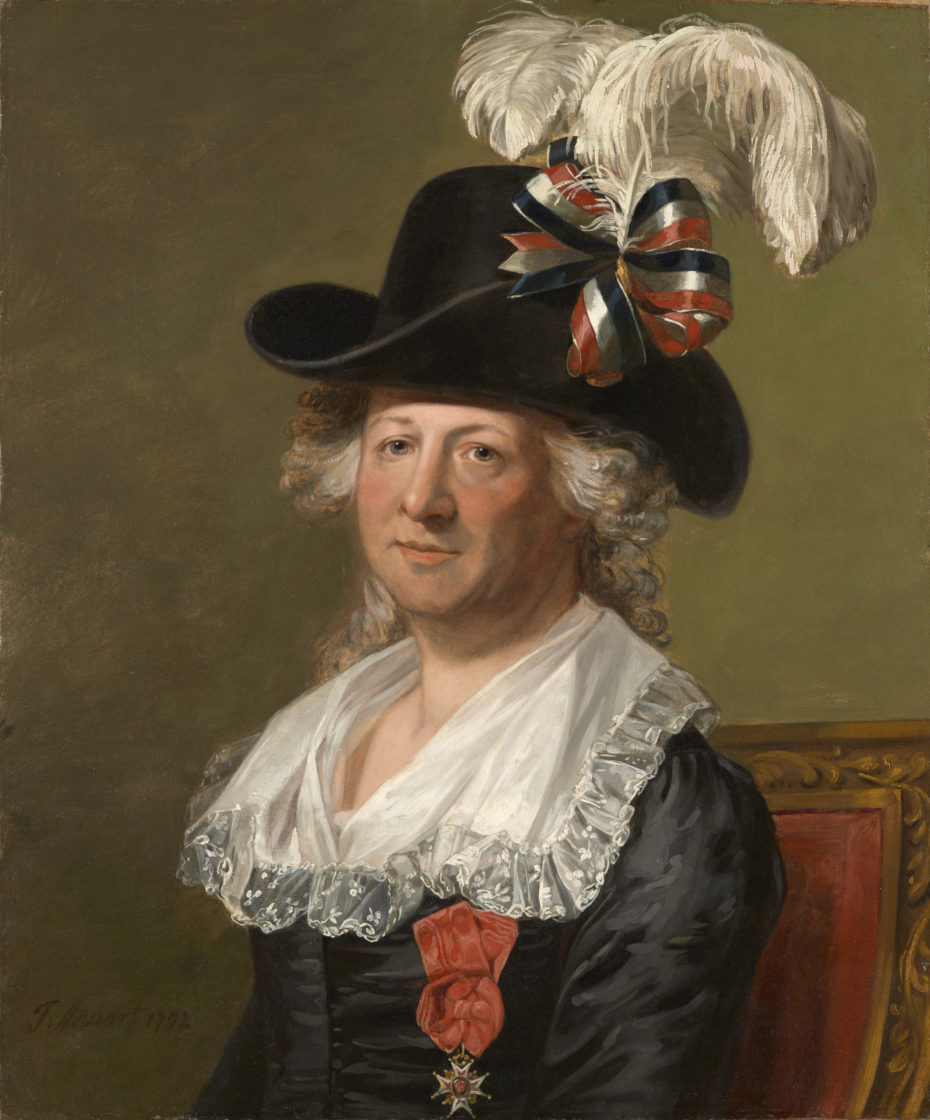
The Chevalier d’Eon knew how to turn heads. She was charming to boot, and an unmatched swordfighter; an impeccable spy for the French government, and capable of dazzling the Empress of Russia. Above all, she found the courage to publically affirm her identity as a transgender woman — an especially intimidating task in 18th century.
Note: we have chosen to use gender pronouns in accordance with those the Chevalier d’Eon publicly identified with at various points in his/her life.
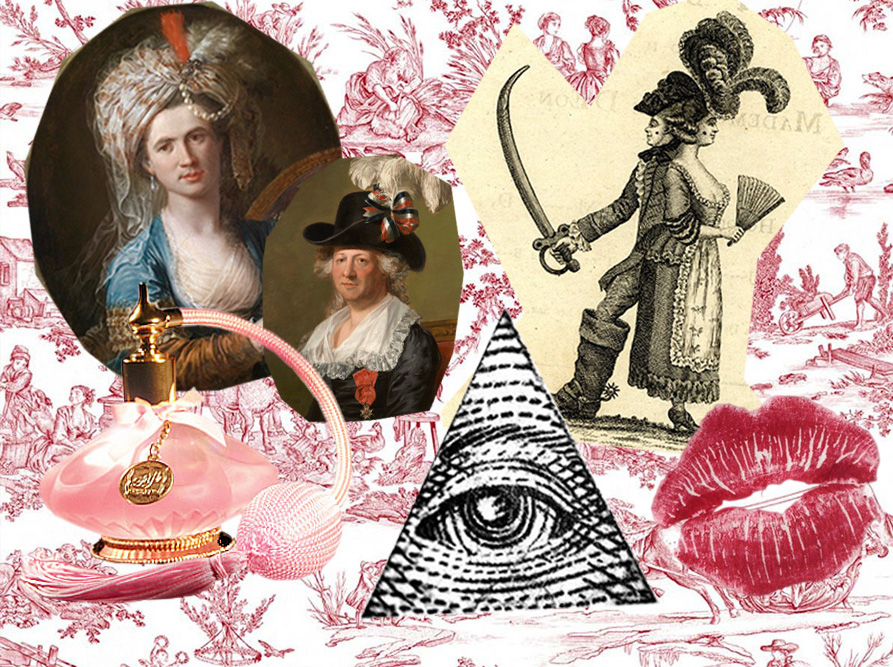
He was born in Burgundy in 1728, with a name that pretty much predestined him for a very, very multi-faceted future: Charles-Geneviève-Louis-Auguste-André-Timothée d’Éon de Beaumont. He came from your run-of-the-mill, noble but poor aristocrats, and debated joining the Church for a while. Instead, he snagged a cozy first job as a civil servant for the French government. But he was slated for something bigger. Something King-sized…
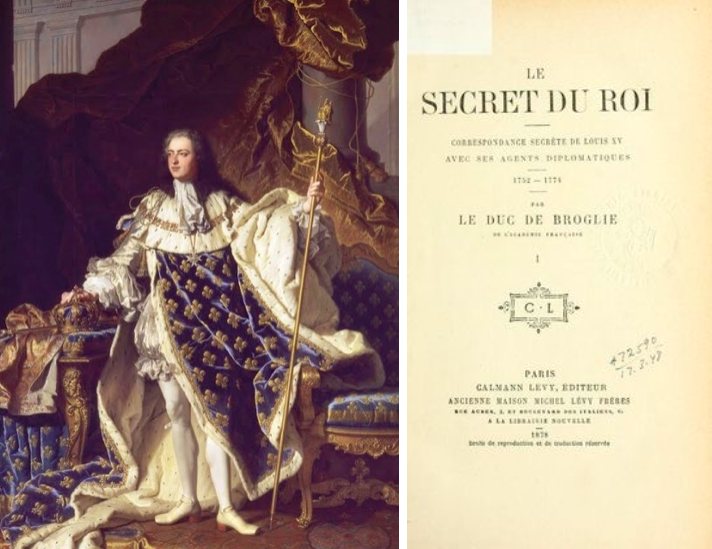
Louis XV was assembling a top secret society with a not-so-secrete name: le Secret du Roi, (the secret of the King) and quietly recruiting spies to strengthen France abroad. To this day, le Secret remains one of history’s most impressive feats, with the society outliving Louis himself and even playing a role in America’s independence.
The Chevalier D’Eon was exceptionally hard-working, and had become a Dragoon (a cavalry soldier on horseback) in order to earn his knight (or “chevalier”) title.

He also had the kind of dashing interpersonal skills necessary to become a secret agent, so Louis deployed him to Russia as the “Secretary to the French Ambassador to Russia” where he buttered up the Empress Elizabeth disguised as a woman of her court. It was incredibly dangerous, and could’ve cost him his life if anyone found out. They didn’t — but they were suspect.
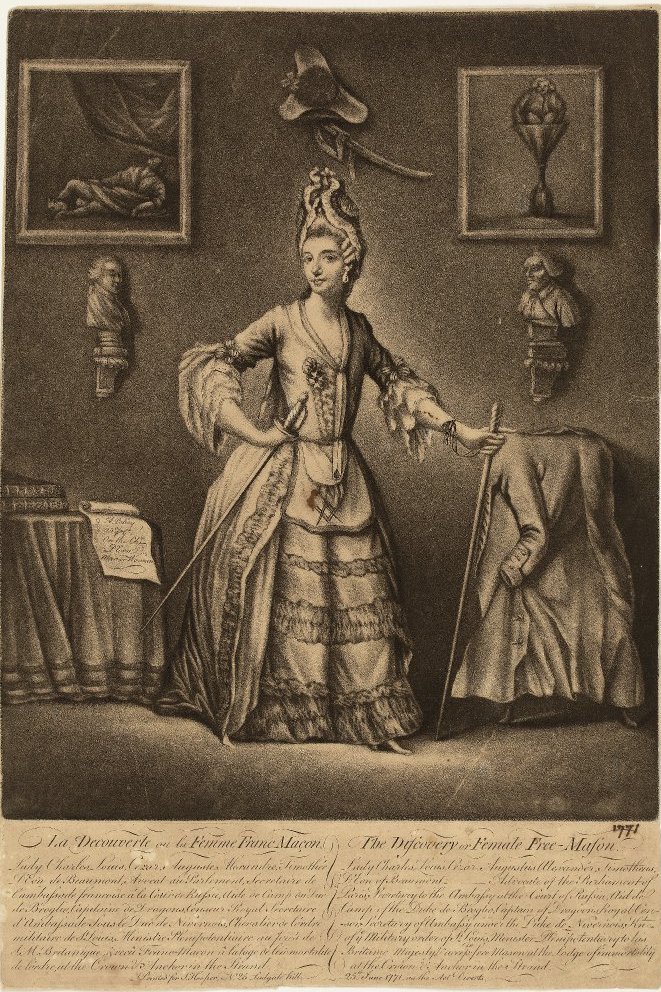
“Discover of the female freemason”/ Portrait of the Chevalier d’Eon
Such high-stakes service to the King wasn’t without its hiccups, and on more than one occasion d’Eon got himself into a lot of trouble, and even wound up exiled in Britain. When France let him back in, it was with a fat pension plan but on certain conditions: to continue living as a woman to remain incognito.
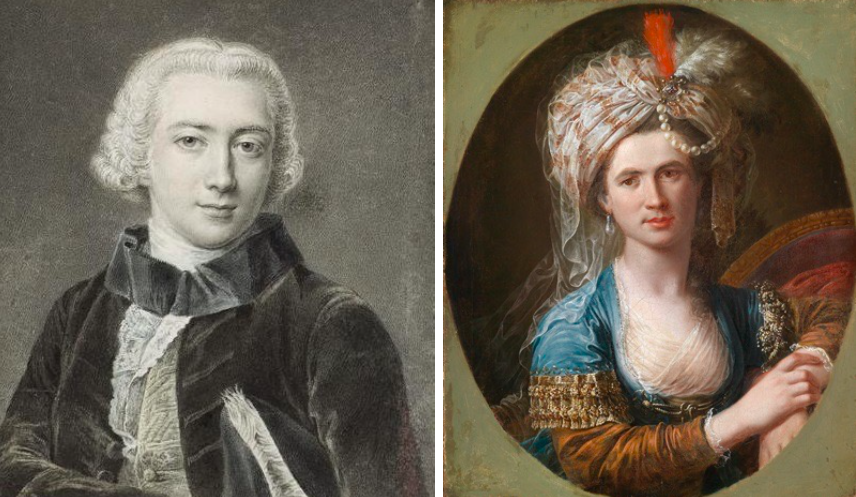
It was an awkward situation, but one that actually suited d’Eon, who had already asked the government to recognise him as a female — one of those, ‘everyone’s thinking it, but no one’s saying it’ situations…
“This eccentric being had long solicited permission to return to France; but it was necessary to find a way of sparing the family he had offended the insult they would see in his return; he was therefore made to resume the costume of that sex to which in France everything is pardoned. The desire to see his native land once more determined him to submit to the condition, but he revenged himself by combining the long train of his gown and the three deep ruffles on his sleeves with the attitude and conversation of a grenadier, which made him very disagreeable company.” – Madame Campan of the Court of Versailles
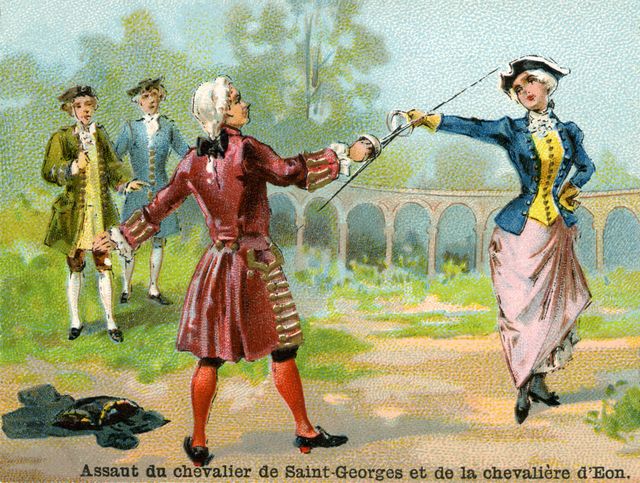
Her everyday life was a breeding ground for gossip, especially when she continued to one-up every man around in the sport of fencing.
Here she is kicking the butt of Monsieur De Saint George in front of the Prince of Wales:
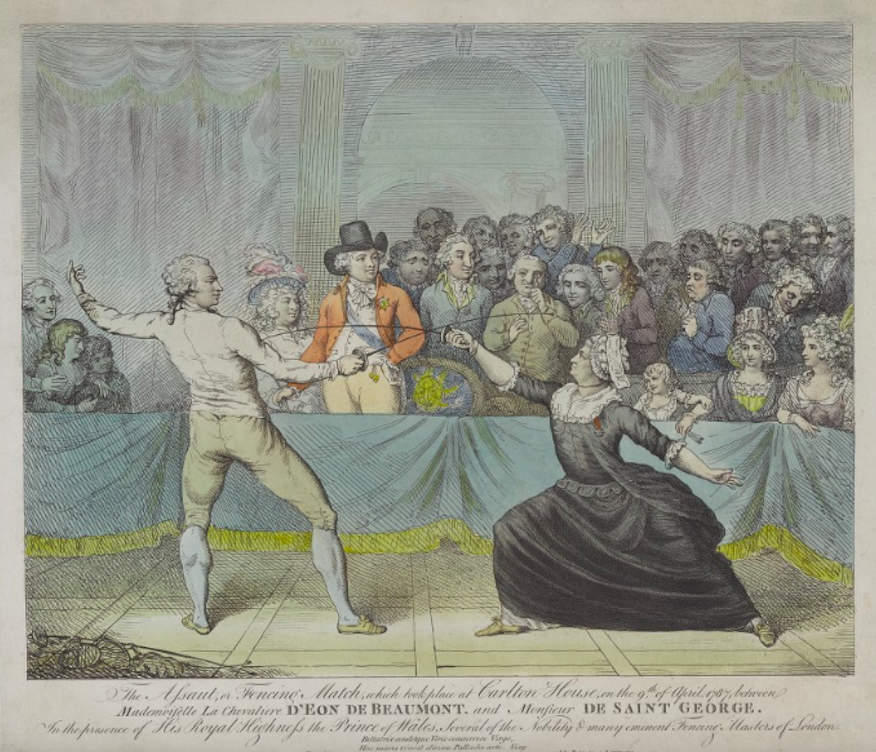
Thus, the chevalier was reborn a chevalière, and formally presented at Versailles in 1777 after what would probably make for one of those perfect Hollywood makeover scenes: four hours of hair curling, nose powdering, and dress-fitting. She even shared a tailor with Marie Antoinette.
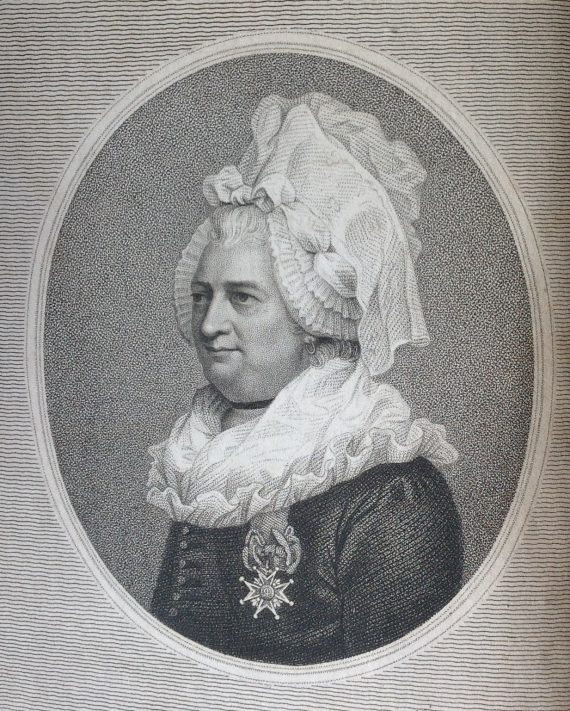
D’Eon could have spent the rest of her days in tranquility, but she begged the government to let her go to war as a dragoon and fight for the country she loved; her country responded by throwing her in jail until she stopped asking.
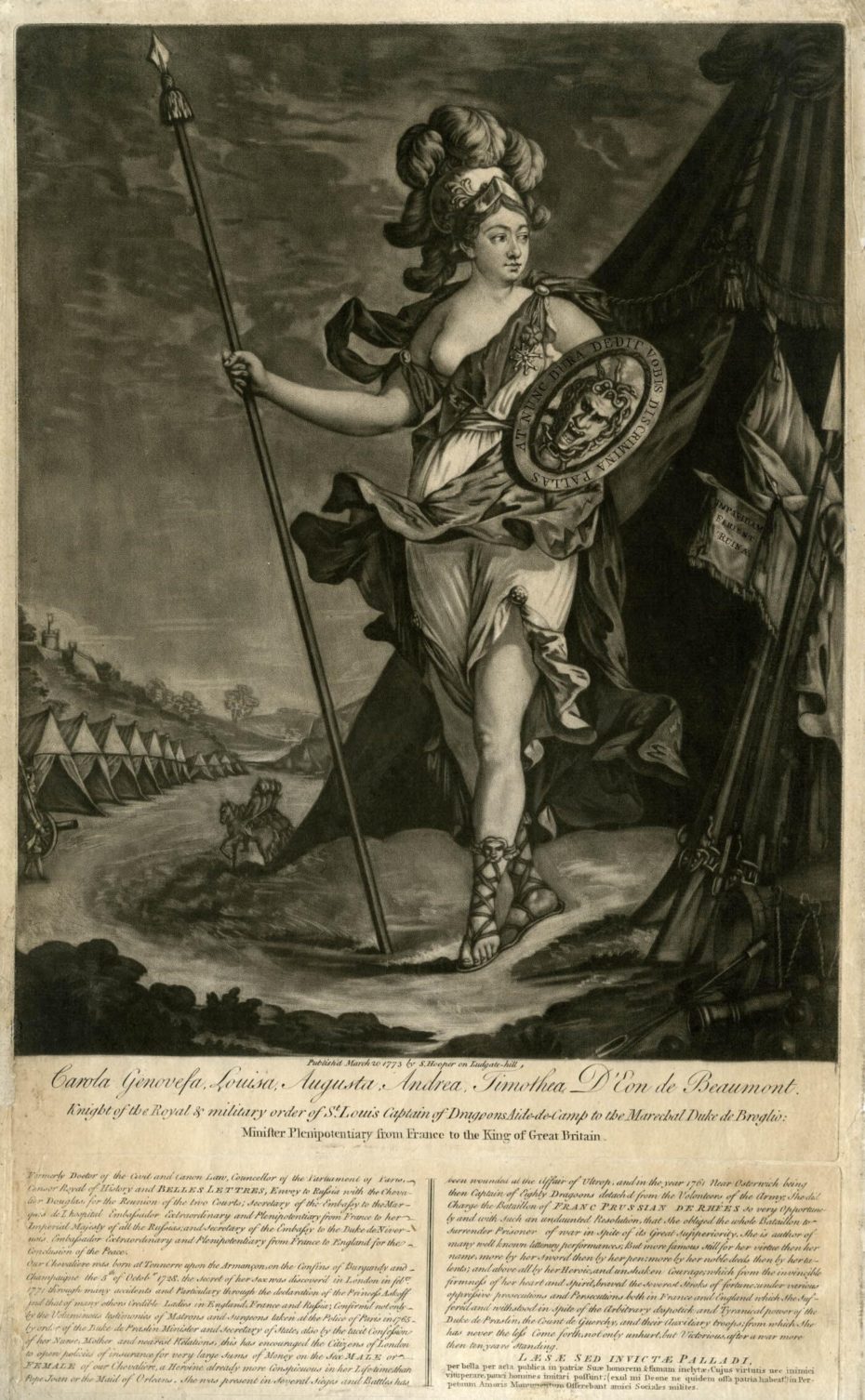
Time proved a little kinder to d’Eon, and Bram Stoker (the author of Dracula) penned a sympathetic, and admirative essay on her in 1910 (although he still recognised her as a man). “In all the range of doubtful personalities,” he finished, “there is hardly any one whom convention has treated worse than it has the individual known in his time — and after — as The Chevalier d’Eon.”




